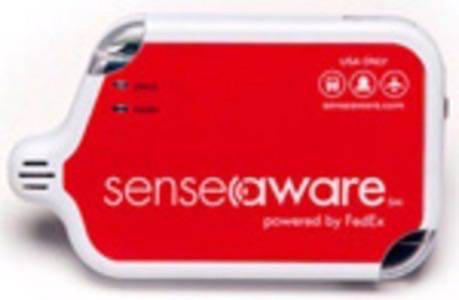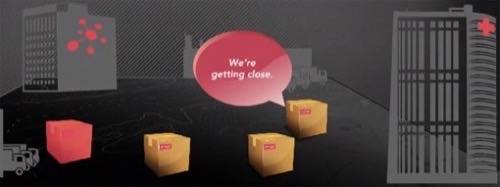International courier giant Fedex has just released a new tracking device and web service for packages. Called SenseAware, it keeps tabs on the temperature, location and other vital signs of a package – including when it’s opened and whether it was tampered with along the way. Fedex is running a trial period of about a year with 50 health care and life science companies, for tracking delivery of surgery kits, medical equipment – and even live organs.

We spoke with FedEx head of innovation, Mark Hamm, about SenseAware and how Fedex is tapping into the emerging trend called Internet of Things.
We’ve covered Internet of Things extensively on ReadWriteWeb over the past year. It’s when everyday objects become connected to the Internet, usually via RFID tags and/or sensors. In the case of Fedex’s SenseAware, it is powered by multiple sensors including light, motion, temperature.

Fedex’s Mark Hamm described the SenseAware device as a “quad-band world phone.” As well as the device, there is a browser-based collaboration platform allowing businesses to actively track the progress of a package. Users can set up triggers, alerts and notices – for example using geo sensors to alert others when a package arrives at a destination. Users can set these triggers and decide who they go to. Essentially, the SenseAware events trigger business processes for the users.
For the web service, businesses pay a single monthly fee of $120 – for that they get the devices and the browser-based web service. Hamm noted that Fedex worked with the FAA to get permission to use the product on their freight planes; the only such device to have permission from the FAA, he told us. Fedex assembled components for SenseAware from a collection of partners, using Fedex’s design specifications.
Real-Time Decisions Based on Sensor Data
Hamm said that SenseAware will enable companies to make real-time decisions much more easily. For example if a perishable goods package sets off on a 2 day journey, but the sensor data shows that the shelf life suddenly decreases – then the package can be instantly diverted to another location, where the product can still be used rather than becoming useless if it sticks to original delivery schedule.
The initial trial period targets life science and medical companies (for example biotech firms), where things like security and knowing the vital signs of a package are very important. Also Hamm highlighted that these companies can collaborate on the sensor data, with precise data and records of delivery.
The trial with the life sciences companies is designed to help Fedex make the “last 20%” of the product more efficient. After about a year of this trial, Fedex will then launch the product globally, as a generally available platform. Hamm expects it will be used by any company or organization dealing with perishable goods, high value goods – such as jewelery, dangerous goods, expensive equipment, and goods that are high value because they’re unique (art work, music tapes, etc.).
Hamm told us that he expects this type of sensor product to be “mainstreaming over time as people become used to interacting with shipments.”











